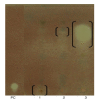Therapeutic Uses of Red Macroalgae
- PMID: 32992919
- PMCID: PMC7583832
- DOI: 10.3390/molecules25194411
Therapeutic Uses of Red Macroalgae
Abstract
Red Seaweed "Rhodophyta" are an important group of macroalgae that include approximately 7000 species. They are a rich source of structurally diverse bioactive constituents, including protein, sulfated polysaccharides, pigments, polyunsaturated fatty acids, vitamins, minerals, and phenolic compounds with nutritional, medical, and industrial importance. Polysaccharides are the main components in the cell wall of red algae and represent about 40-50% of the dry weight, which are extensively utilized in industry and pharmaceutical compounds, due to their thickening and gelling properties. The hydrocolloids galactans carrageenans and agars are the main red seaweed cell wall polysaccharides, which had broad-spectrum therapeutic characters. Generally, the chemical contents of seaweed are different according to the algal species, growth stage, environment, and external conditions, e.g., the temperature of the water, light intensity, nutrient concentrations in the ecosystem. Economically, they can be recommended as a substitute source for natural ingredients that contribute to a broad range of bioactivities like cancer therapy, anti-inflammatory agents, and acetylcholinesterase inhibitory. This review touches on the main points of the pharmaceutical applications of red seaweed, as well as the exploitation of their specific compounds and secondary metabolites with vital roles.
Keywords: Rhodophyta; bioactive compounds; drugs; seaweed.
Conflict of interest statement
The authors declare no conflict of interest.
Figures




References
-
- Wan A.H., Davies S.J., Soler-Vila A., Fitzgerald R., Johnson M.P. Macroalgae as a sustainable aquafeed ingredient. Rev. Aquac. 2019;11:458–492. doi: 10.1111/raq.12241. - DOI
-
- Ismail M.M., Gheda S.F., Pereira L. Variation in bioactive compounds in some seaweed from Abo Qir bay, Alexandria, Egypt. Rend Lincei-Sci. Fis. 2016;27:269–279.
-
- Vieira E.F., Soares C., Machado S., Correia M., Ramalhosa M.J., Oliva-Teles M.T., Carvalho A.P., Domingues V.F., Antunes F., Oliveira T.A.C., et al. Seaweeds from the Portuguese coast as a source of proteinaceous material, total and free amino acid composition profile. Food Chem. 2018;269:264–275. - PubMed
-
- Paiva L., Lima E., Patarra R.F., Neto A.I., Baptista J. Edible Azorean macroalgae as source of rich nutrients with impact on human health. Food Chem. 2014;164:128–135. - PubMed
Publication types
MeSH terms
Substances
LinkOut - more resources
Full Text Sources

